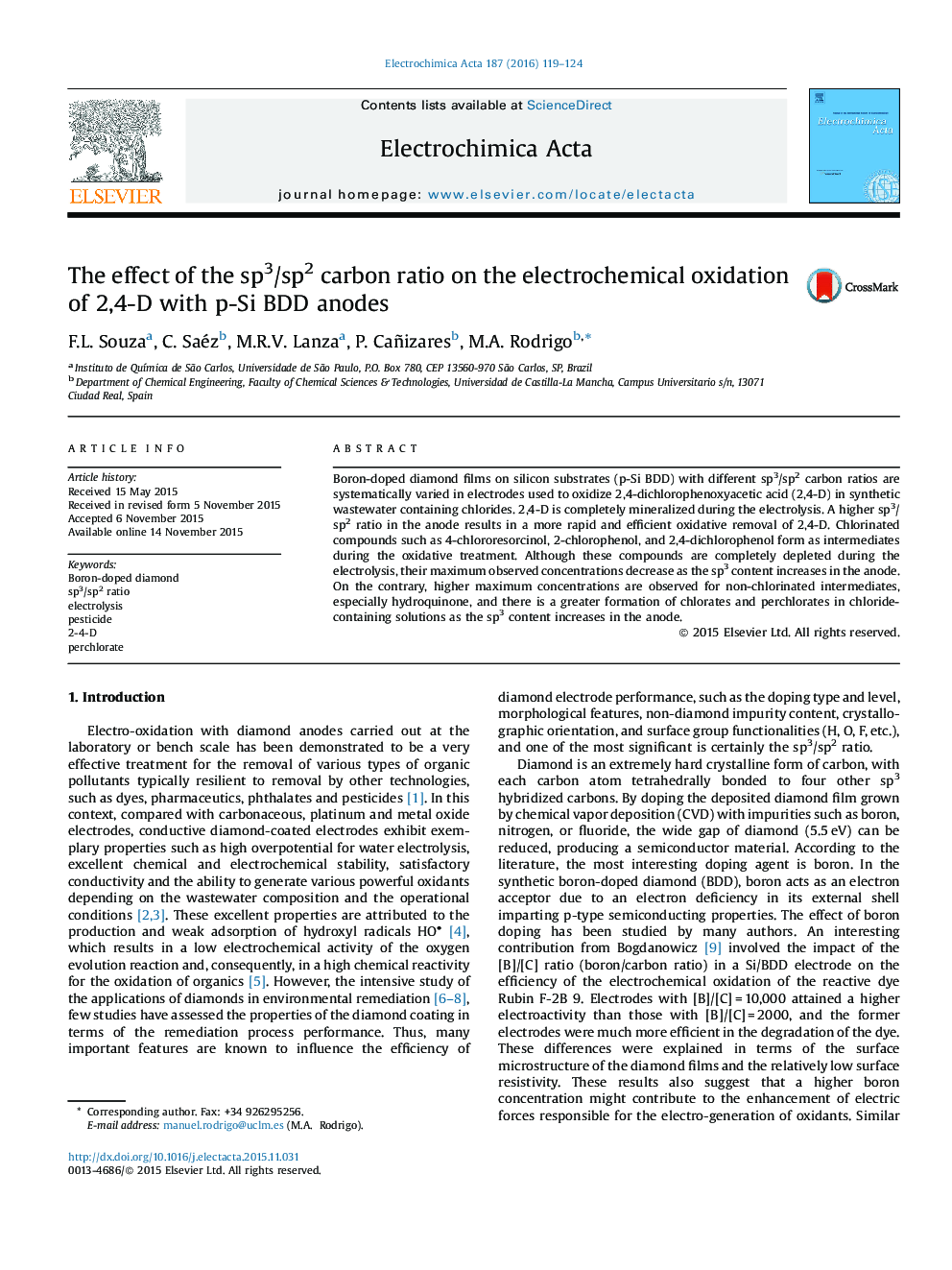| Article ID | Journal | Published Year | Pages | File Type |
|---|---|---|---|---|
| 183251 | Electrochimica Acta | 2016 | 6 Pages |
•The efficiency of the electrolysis of 2,4-D depends on the sp3/sp2 ratio of the diamond anode.•A higher sp3/sp2 ratio lowers the energy required to mineralize the pesticide.•The sp3/sp2 ratio influences the concentration but not the type of intermediates produced.•Chlorate and perchlorate production is favored at higher sp3/sp2 ratios.
Boron-doped diamond films on silicon substrates (p-Si BDD) with different sp3/sp2 carbon ratios are systematically varied in electrodes used to oxidize 2,4-dichlorophenoxyacetic acid (2,4-D) in synthetic wastewater containing chlorides. 2,4-D is completely mineralized during the electrolysis. A higher sp3/sp2 ratio in the anode results in a more rapid and efficient oxidative removal of 2,4-D. Chlorinated compounds such as 4-chlororesorcinol, 2-chlorophenol, and 2,4-dichlorophenol form as intermediates during the oxidative treatment. Although these compounds are completely depleted during the electrolysis, their maximum observed concentrations decrease as the sp3 content increases in the anode. On the contrary, higher maximum concentrations are observed for non-chlorinated intermediates, especially hydroquinone, and there is a greater formation of chlorates and perchlorates in chloride-containing solutions as the sp3 content increases in the anode.
